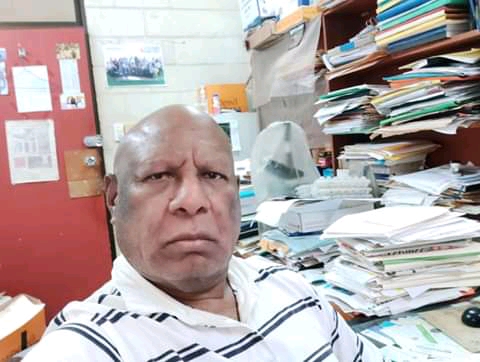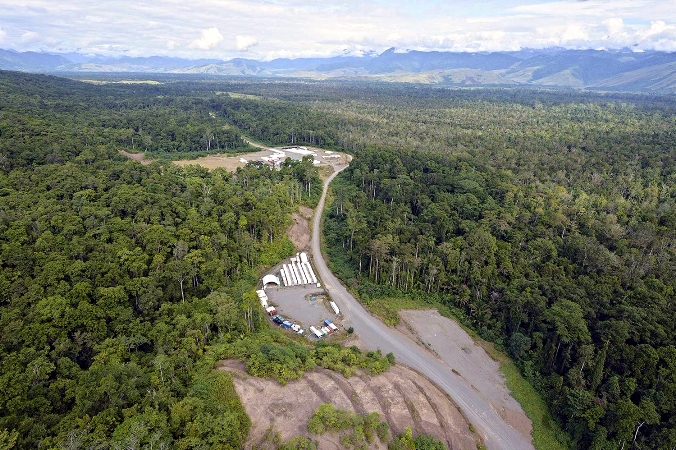By CYRIL GARE
WHILE Deep Sea Tailings Placements (DSTP) remains the best available option currently, the K18.4 billion Wafi-Golpu Joint Venture (WGJV) mining project is still “red flagged” by two fundamental requirements and the government shouldn’t have granted an environment permit, an academic has warned.
Dr Ralph Mana, an Associate professor of Zoophysiology (how bodily parts of animals function) and senior lecturer at the University of PNG Biological Sciences said WGJV spent K30 million on environment impact assessment plan but did very little on marine studies where tailings and concentrate filtrate water will impact.

He was reacting to government’s granting of the Environment Permit (EP) for the WGJV project despite strong opposition by the Morobe Provincial Government, landowners, academia, and technical experts.
In granting the EP towards end of last month, Minister for Environment, Conservation and Climate Change, Wera Mori has described the WGJV as “no better project…which on record is one of the biggest undeveloped copper and gold deposits in the world.”
But Dr Mana said Minister Mori was ill-informed, thus has misled both parliament and the government on the impacts of tailings on the marine ecosystem at Wagang.
“My stand is clear based on my review of the EIS (Environmental Impact Statement).
“WGJV does not have any substantial baseline data of Huon Gulf. Baseline data is a fundamental requirement for DSTP. Organisms will be destroyed by tailings and filtrate waste water. Monitoring will be impossible if you don’t have baseline data.
“Secondly, major gap in the EIS is the Bathymetry (Bathymetry is the study of underwater depth of ocean floors or lake floors) and uneven characteristics of the slope at Wagang where the pipe will be located.
“The slope is so rough that high density tailings will break into suspension at 300m and continue to do so. Since the Markham canyon is 4-6 km away most tailings will not reach the canyon.
“One fundamental requirement for DSTP is tailings must reach 1,000m depth quickly. This is not the case at Wagang,” Dr Mana said.
He added that from the WGJV DSTP EIS, the model showed that about 60 per cent of tailings will not reach Markham canyon 4-6 km away from pipe orifice.
Dr Mana cited further study by Prof. Renagi, currently University of Technology Vice Chancellor who found that 80 per cent of sediments from Markham River are not found in Markham canyon.
“And no one knows where it goes to. So after going thru the EIS, I would confidently say that less than 10 per cent of tailings might find the canyon if at all and the rest will spread in all directions to distances as far as 30km.
“It will be worse than Basamuk because Basamuk canyon directs the tailings to 800-1,000m depth. I also delineated the Oceanographic EIS and guess what I found; there are two major currents flowing opposite to each other at DSTP site meaning tailings will be transported in both directions-Salamaua way as well as Finschafen way through Vitiaz strait.
“Despite the information on the sediments loads from the 12 rivers, the exact amount of sediments entering the canyon head is yet to be determined. Over 80 per cent of the sediments that entered the sea are no way to be seen nor in the canyon and the surroundings.
“Study must be done to clarify this disappearance of the huge sediment load that enters the gulf. Therefore it is not true that tailings will flow into the canyon because when it gets into suspension it will follow what the river sediments are doing and that is not to flow into the canyon.
“The Minister has ill-informed the parliament and the government. Take home message is Wagang is not a good spot for DSTP. Period,” Dr Mana said.
Since 2009, Dr Mana represented UPNG in collaboration with the National Museum of Natural History in Paris, France to carry out deep sea expeditions in PNG waters; Solomon and Bismarck seas as part of Deep Sea Benthos program or “filling the gap” of our knowledge about deep sea biodiversity. It is a comprehensive inventory of deep sea biodiversity by non-mining associated researchers since 1870s.
“These are the two red flags that CEPA has disregarded hence the current case. I am for DSTP if all DSTP requirements are met.
“DSTP is the most reliable waste management system to handle 20 million tons of tailings annually. Multiply 20 by 50 years and that is the volume we talking about. We are moving a mountain and the best place to put it is in the canyons and deep sea,” Dr Mana said.

